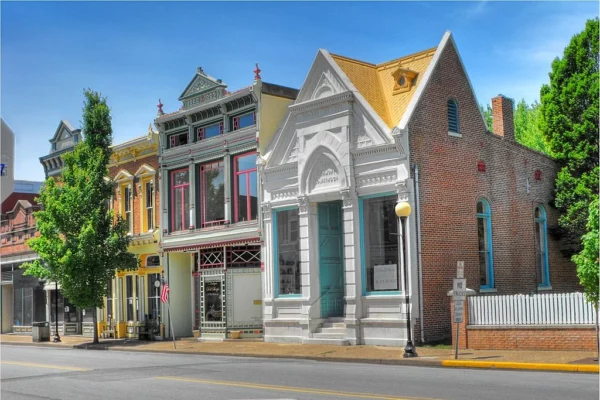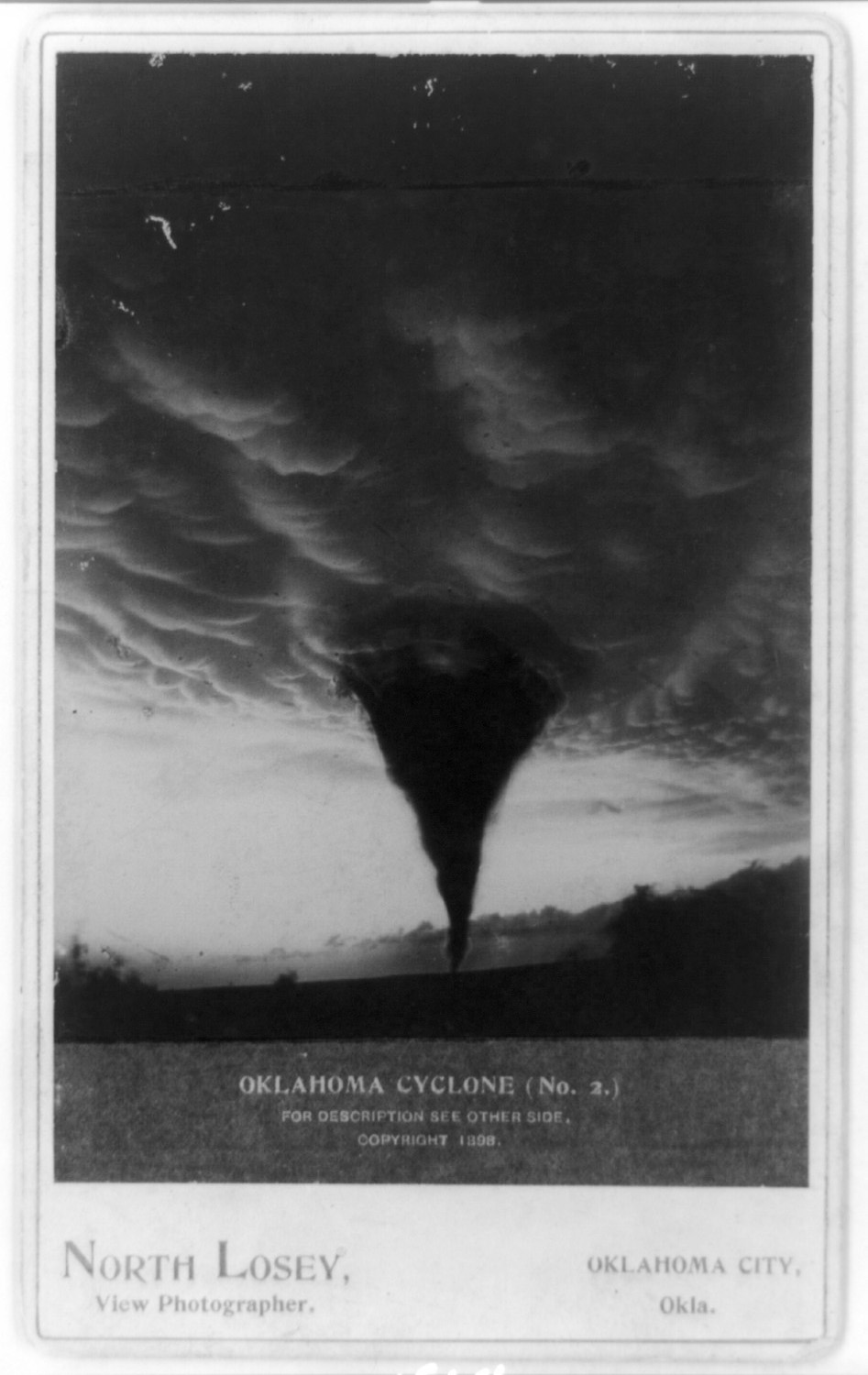
I must have watched the movie Twister nearly 30 times. You could say I was slightly obsessed with the critically-panned 90s blockbuster about storm-chasing starring Helen Hunt and Bill Paxton. Tornados are just one of those things that both terrify and fascinate me at the same time, like sharks, religious cults or the history of the bubonic plague. I may have also developed an awkward adolescent crush on Bill Paxton at the time. But back to the twisters. I’ve never seen one in real-life, although I have a feeling that if I did, my first instinct would be to get my camera out. And it turns out that more than a century ago, when photography was still only in its very early stages of developing into a mass medium, people living in tornado country had the very same instinct.
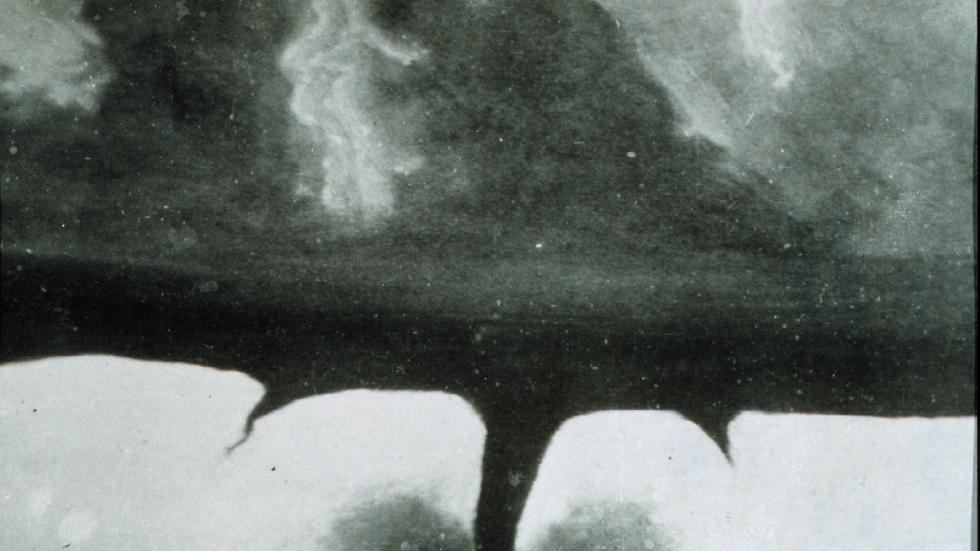
The National Geographic claims that this harrowing image is the oldest known photograph of a tornado, taken on April 26, 1884 at Garnett, Kansas. Some dispute its authenticity, suggesting it’s a product of some early photoshopping skills and the University of Tulsa claims a photograph they acquired taken in 1896 by a Mr. Thomas Croft (below) is in fact the first known photograph of a tornado.
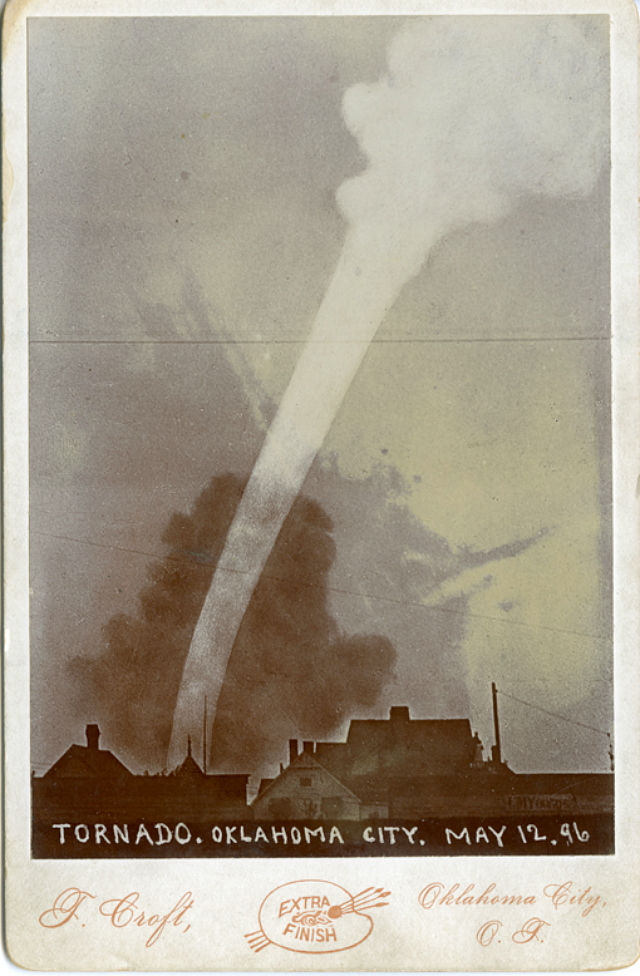
The F2 tornado was captured on a glass plate image taken in a view camera with a tripod. The blur is caused by the time of the exposure. Croft, known for his photographs of reservation life in the Native American territories, also took this one below of the same tornado.
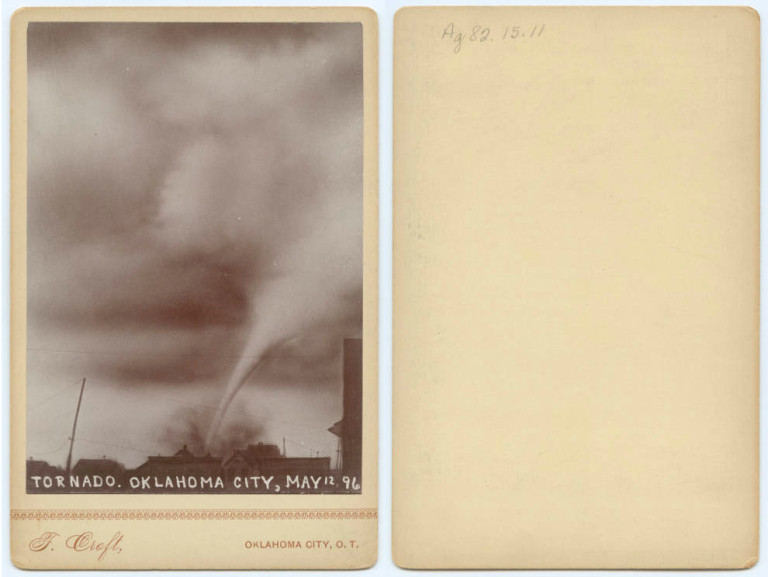
There’s even yet another image which the Kansas Historical Society claims is even older, taken by a farmer in Kansas in 1884 using a cumbersome box camera while standing 14 miles from the tornado.
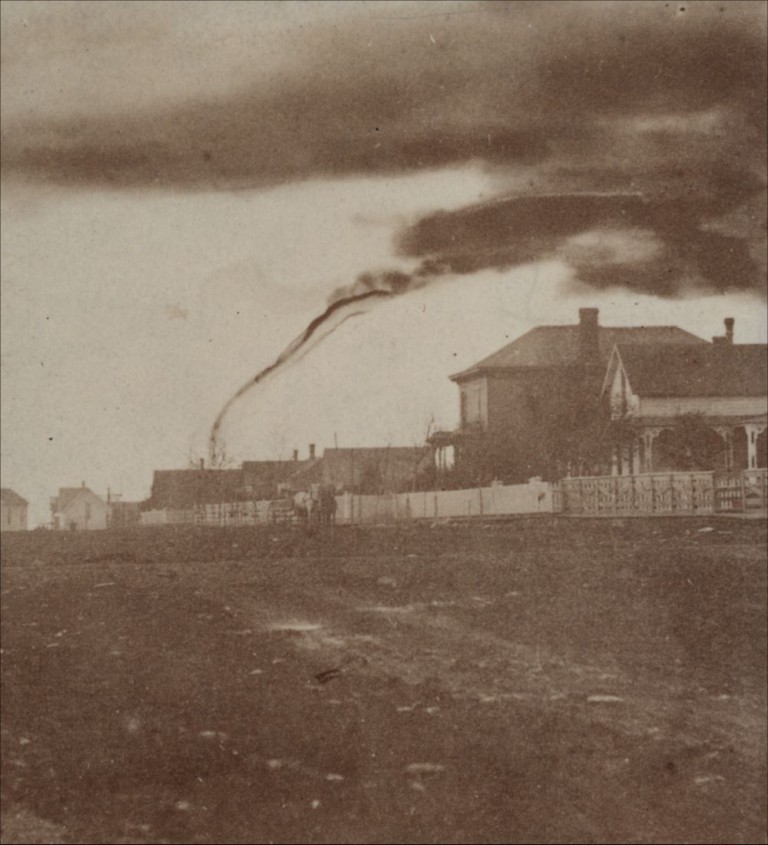
It was the farmers living in tornado country that were usually first on the scene when these apocalyptic storms took shape, and as the distribution of film photography increased over the years, so too did the documentation of twisters.
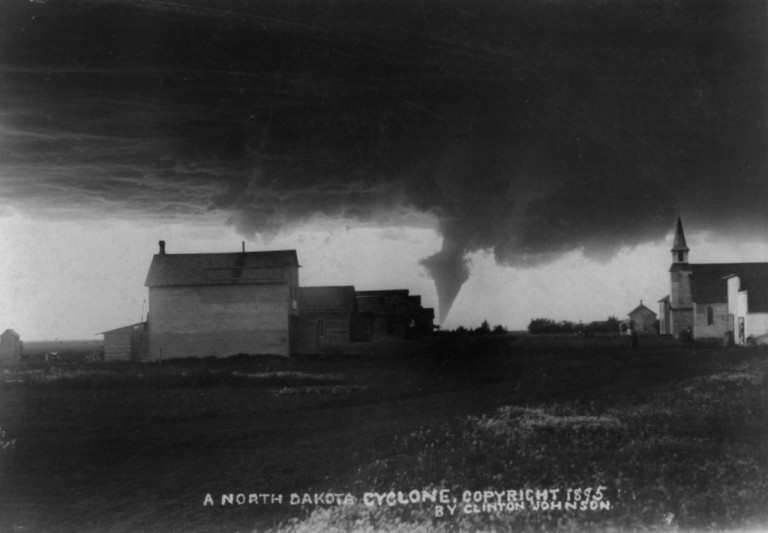
These amateur photographs, arguably more eerie in black & white than their modern counterparts, were taken long before there were tornado warnings or forecasts. As Allison Meier points out from her article on the first tornado chasers, meteorology was still a very young science in those days, so to get out there in time, set up tripods and wait for an antique camera to take the shot in extremely dangerous weather conditions, was no walk in the park.
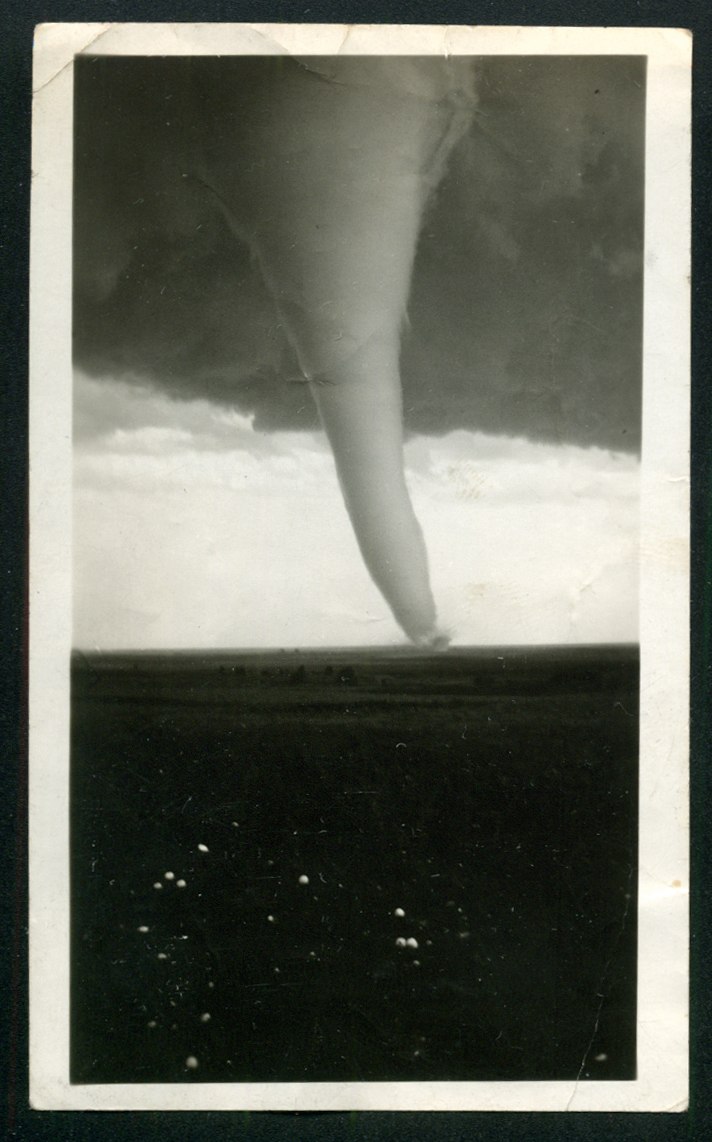
Even positioned at a seemingly safe enough distance of around 15 miles from the cyclone, these farmers turned early storm chasers were without a doubt risking their lives for the shot.
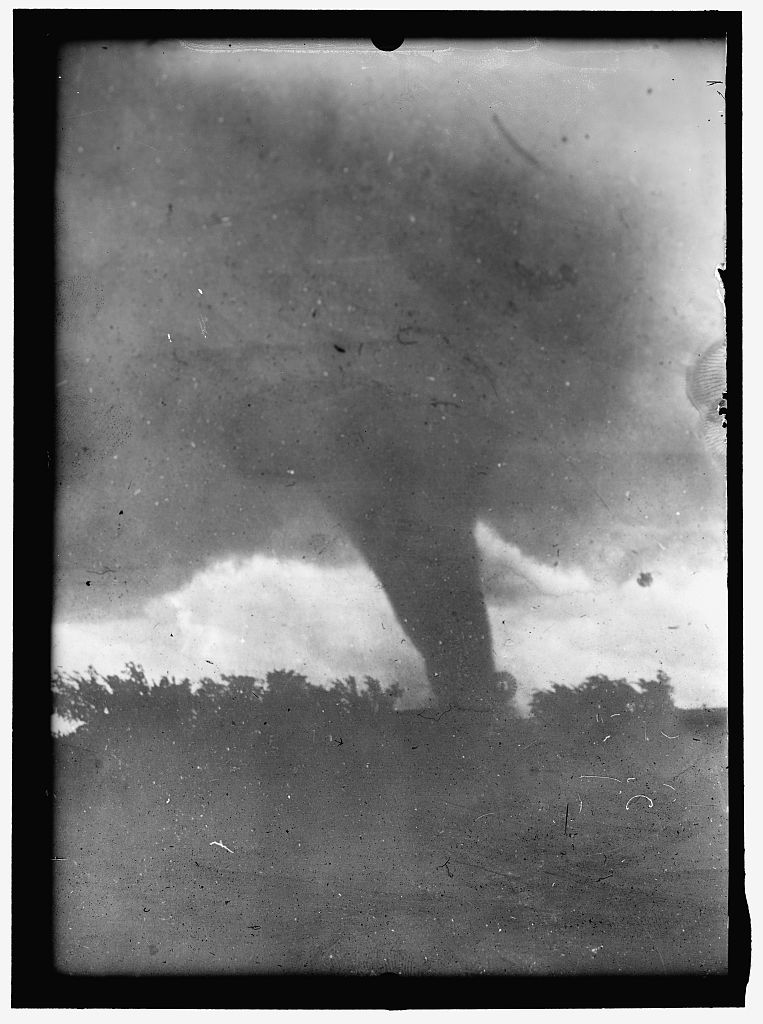
Photographer unknown, 1955. 1913-17
Like the wind, tornadoes are technically invisible, and so what we’re actually looking at is the debris and dust picked up in the path of its destruction which gives the twisters that dark ominous look– and could come flying in the photographer’s direction at any moment.

Above: A 33rpm plastic record that sliced into a telephone pole during a tornado. Historic NWS Collection
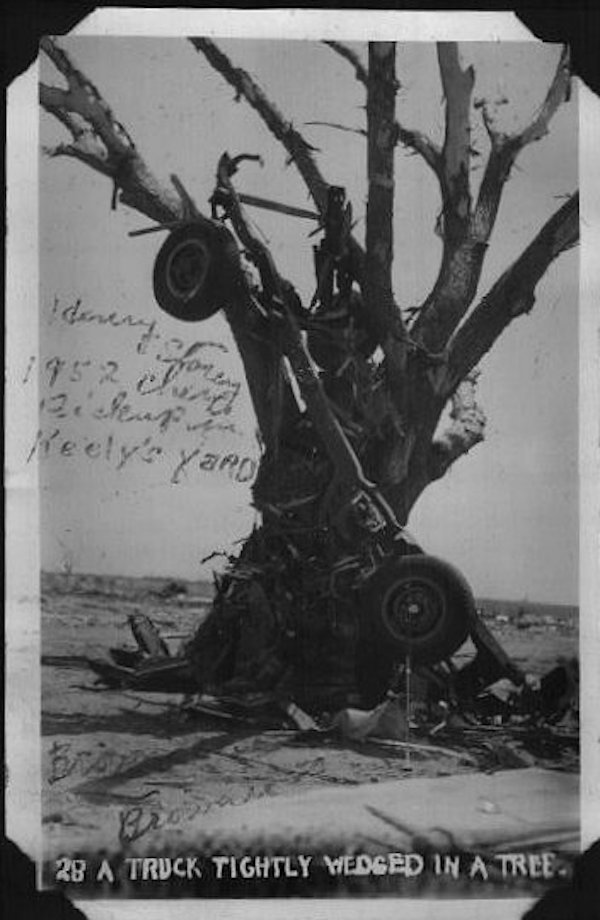
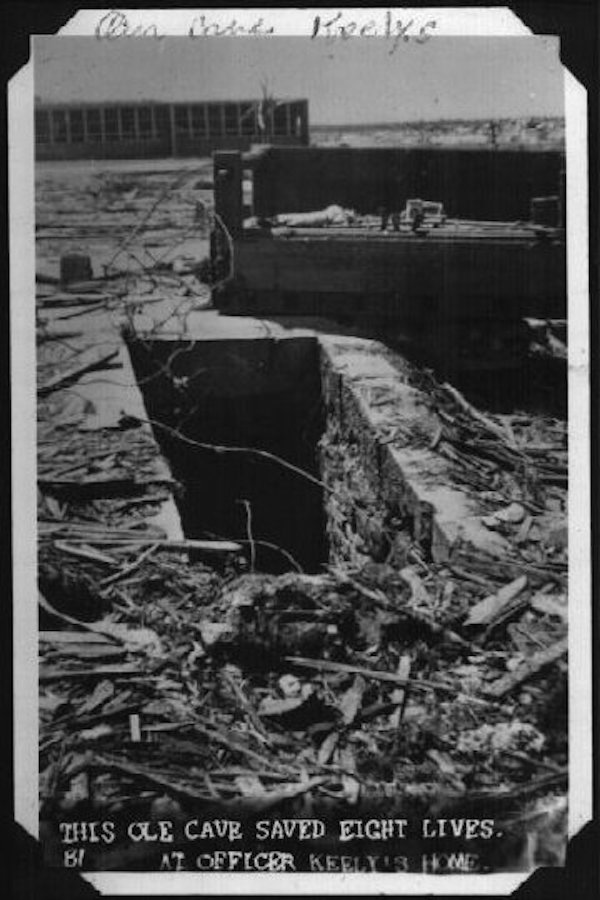
Photographs via Tornado Chaser
Speaking of daredevil farmers; did you hear about the ones who survived the eye of the storm?
There are only two recorded men in history who have looked up into the funnel of a tornado and lived to tell about it; both were farmers.
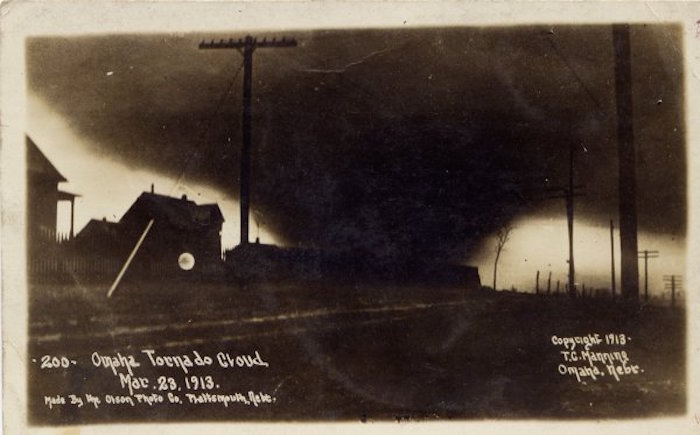
In 1928, Will Keller from Kansas had just finished putting his family in the storm shelter and was about to close the door when he decided t0 take a last look at the approaching tornado. Before he knew it, the cyclone had hopped up and leapt on top of him. Inside the eye of the storm, Keller said it was oddly calm…
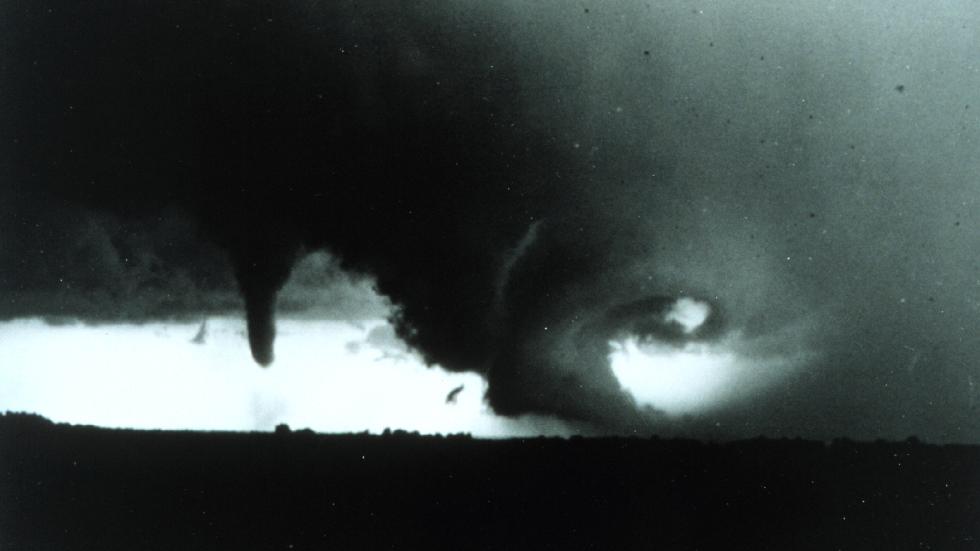
“Everything was as still as death … made brilliantly visible by constant flashes of lightening which zigzagged from side to side”. Around the lower rim of the great vortex, smaller, miniature tornados would break away from the walls, causing a hissing and screaming noise as they travelled from side to side. You can read his full account here.
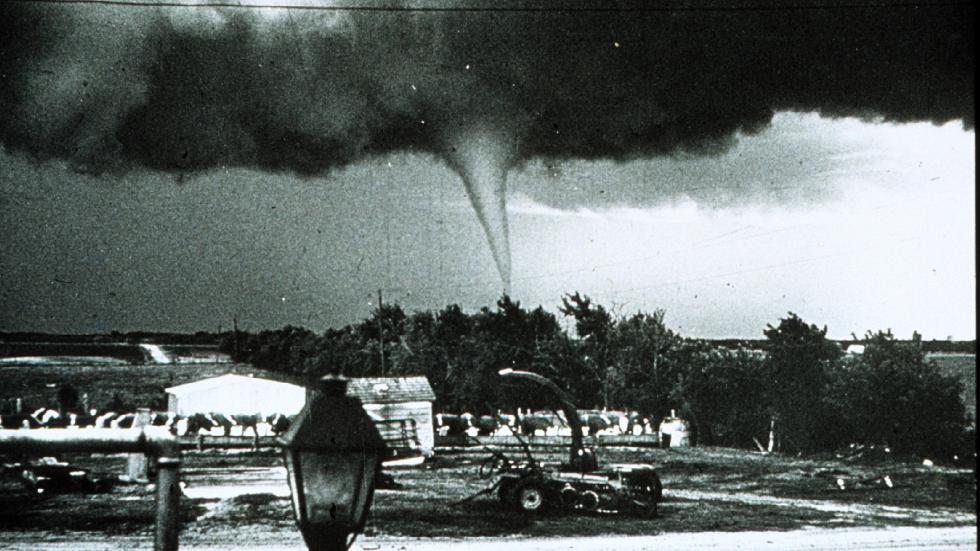
Later in 1943, another farmer from Texas gave a very similar account to Keller’s, which you can read here, after he found himself in the funnel of a tornado when it tore the roof off his house. Farmer Roy Hall added that the inside of the tornado, which killed over 100 people that day, “was so slick … it resembled the interior of a glazed standpipe.”
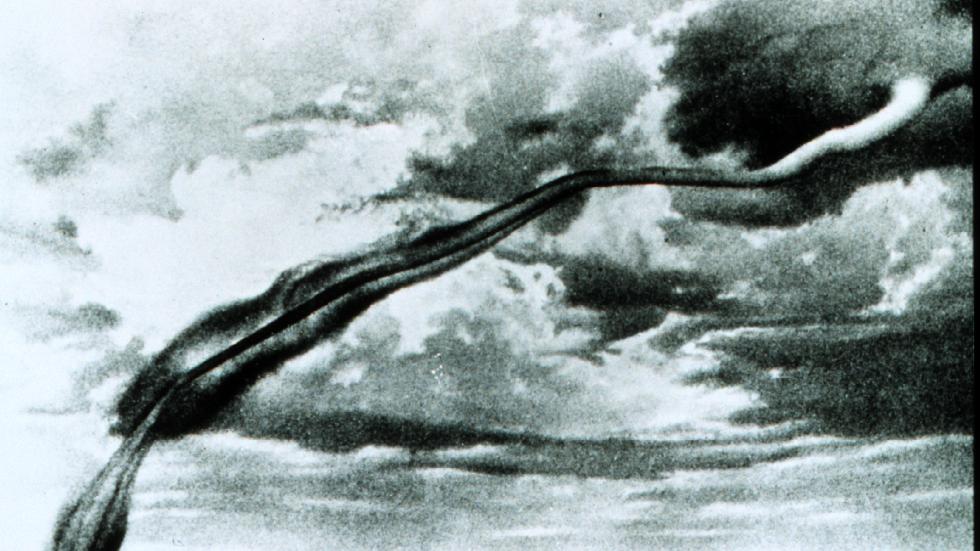
Photograph by Clinton Johnson of a tornado in North Dakota, 1895 (c) Library of Congress
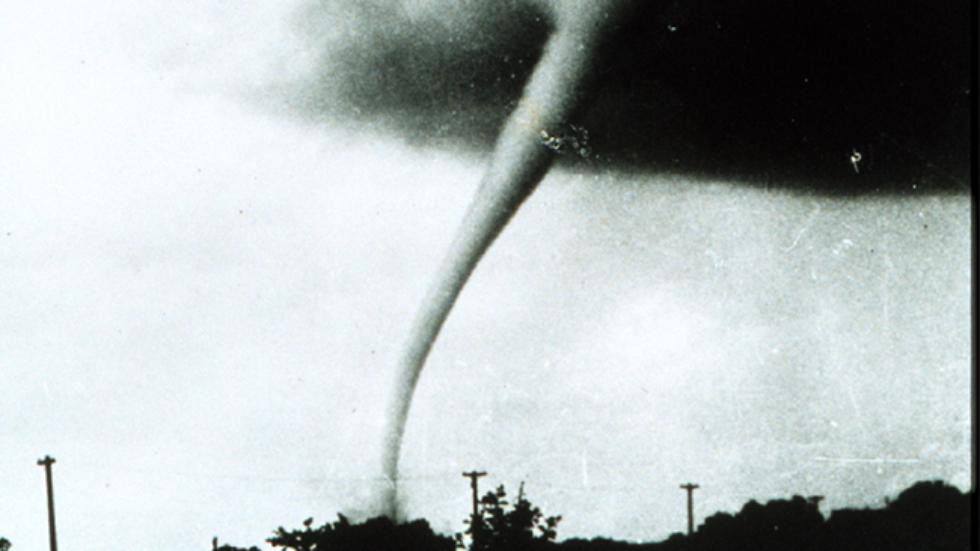
Omaha Easter Sunday tornado in 1913, which produced a series of eight tornadoes that killed 153 people and was estimated to be an F4.
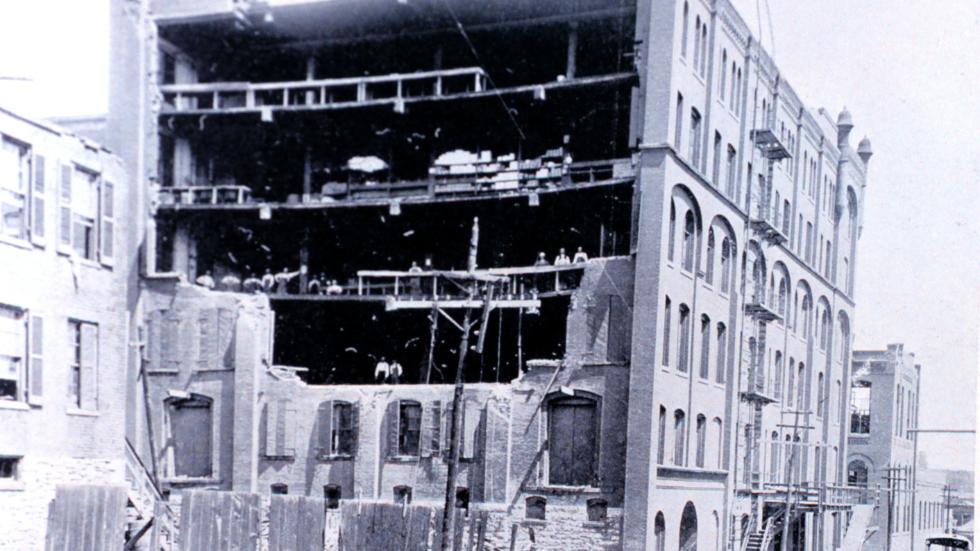
Trunk Factory on Thirteenth and Papin Streets. In Photographic Views of the Great Cyclone at St. Louis, May 27, 1896
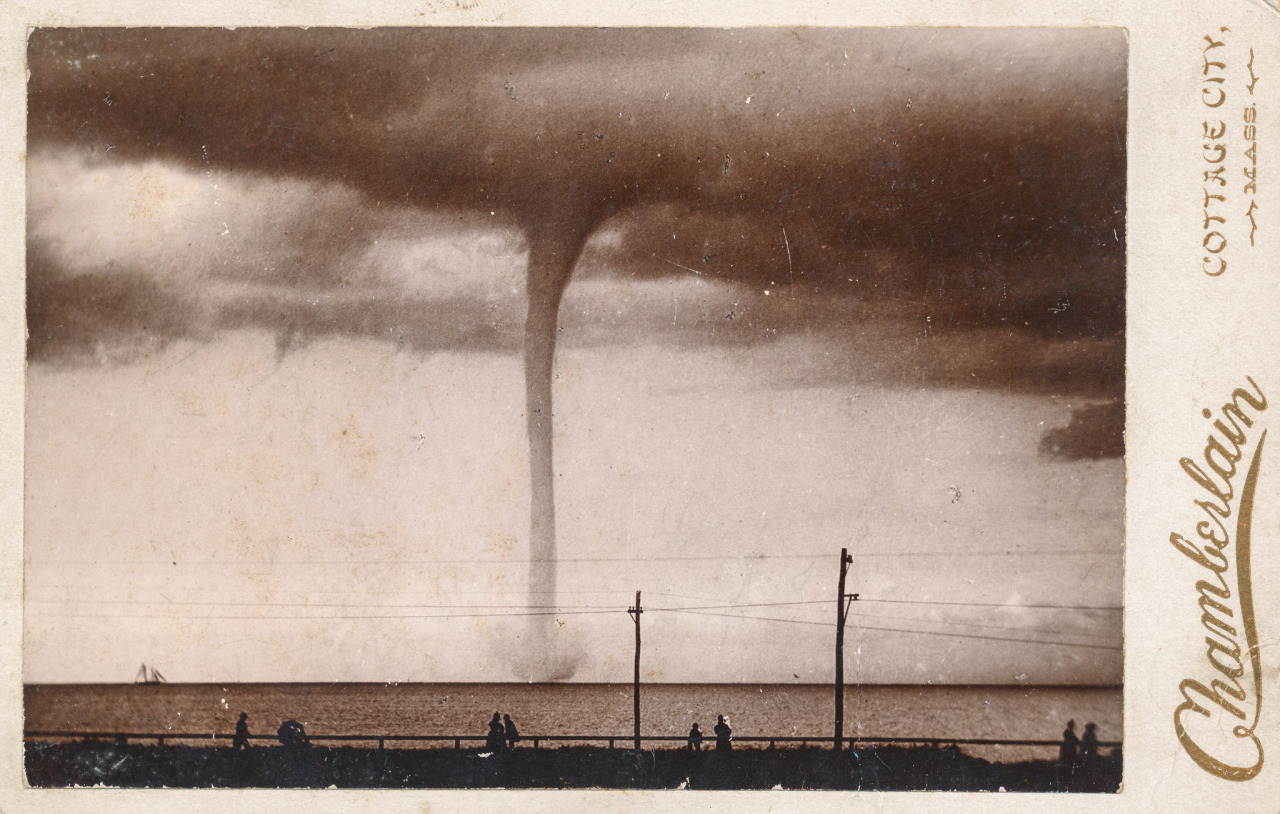
“Water spout seen from Martha’s Vineyard, Aug. 1896.” Chamberlain, Cottage City, Mass.

Downtown Dallas, 1950s.
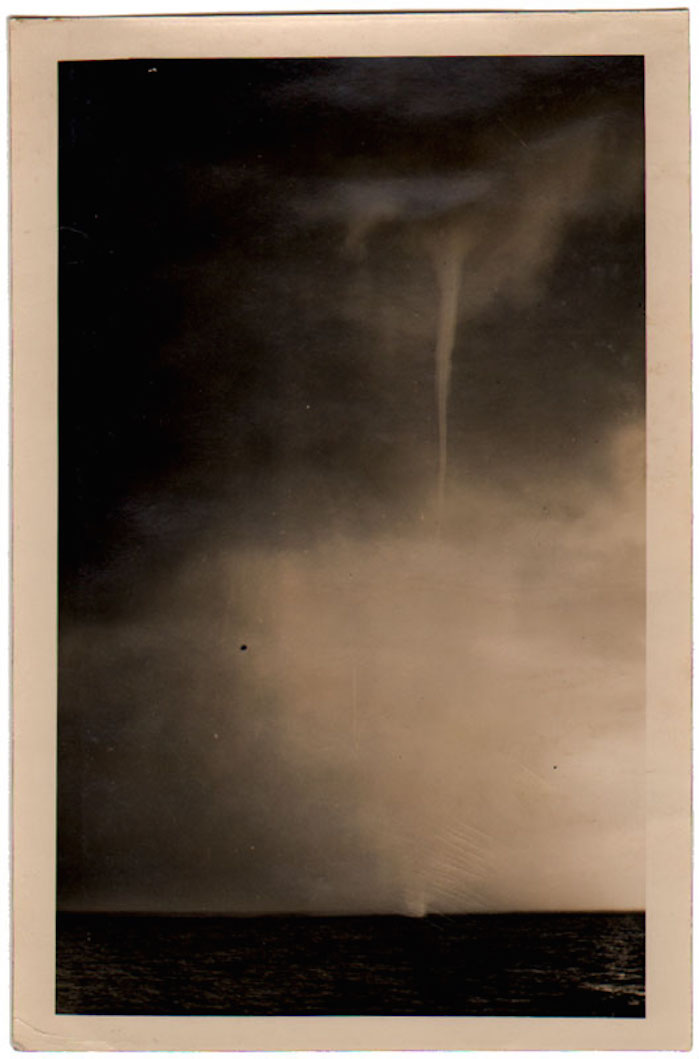
Unknown photographer, circa 1930s
I have a sneaking suspicion somebody’s going to be watching Twister again tonight.









